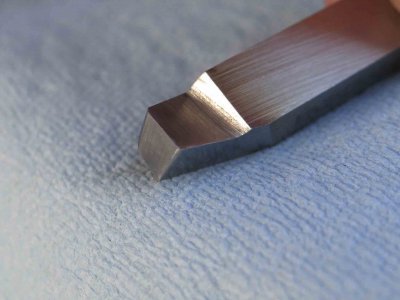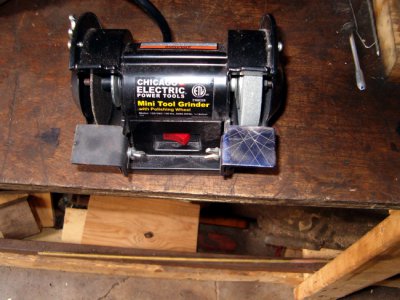Joe, keep in mind that you are grinding the relief angles at the same time as you are grinding the shape of the tool. That is, when you grind the side cutting edge angle you are also cutting the side relief angle at the same time. When you grind the end cutting edge angle you are cutting the end relief at the same time. The relief angles are set by the angle of your tool rest. If you choose to free hand the tool then your angles will be approximate at best. Your lathe has enough power for a general angle to work but for those guys with small lathes this is going to be a crap shoot. It is better to have a tool rest/table that can be set to a precise angle and locked down.
As I said, I agree with using mild steel keystock to learn to grind tools. You are trying to understand how all the angles on a tool are cut. Relief angles are cut as above, while rake angles simply involve a straight push into the wheel or belt; it is much easier and more accurate to do this when you have a tool rest that can be locked at accurate angles. Once you understand how the various angles are cut then you need to learn how those angles function and how they affect cutting forces so that you can alter them to suit your needs. For example, if you need a fine finisher then you can increase side relief to provide a sharper interface and better clearance at the cutting edge and increase back rake to focus the cutting forces at the tip of the tool. Then you can use a slightly larger nose radius to create a really fine finish. None of this is difficult to do but you must first learn how to do it, how to move your hands and how to set your table angles.
Stay with it, seek understanding about how the various angles work and you'll be way ahead. Carbide tools work great but when it comes to tailoring a tool to your specific needs you cannot beat HSS.



